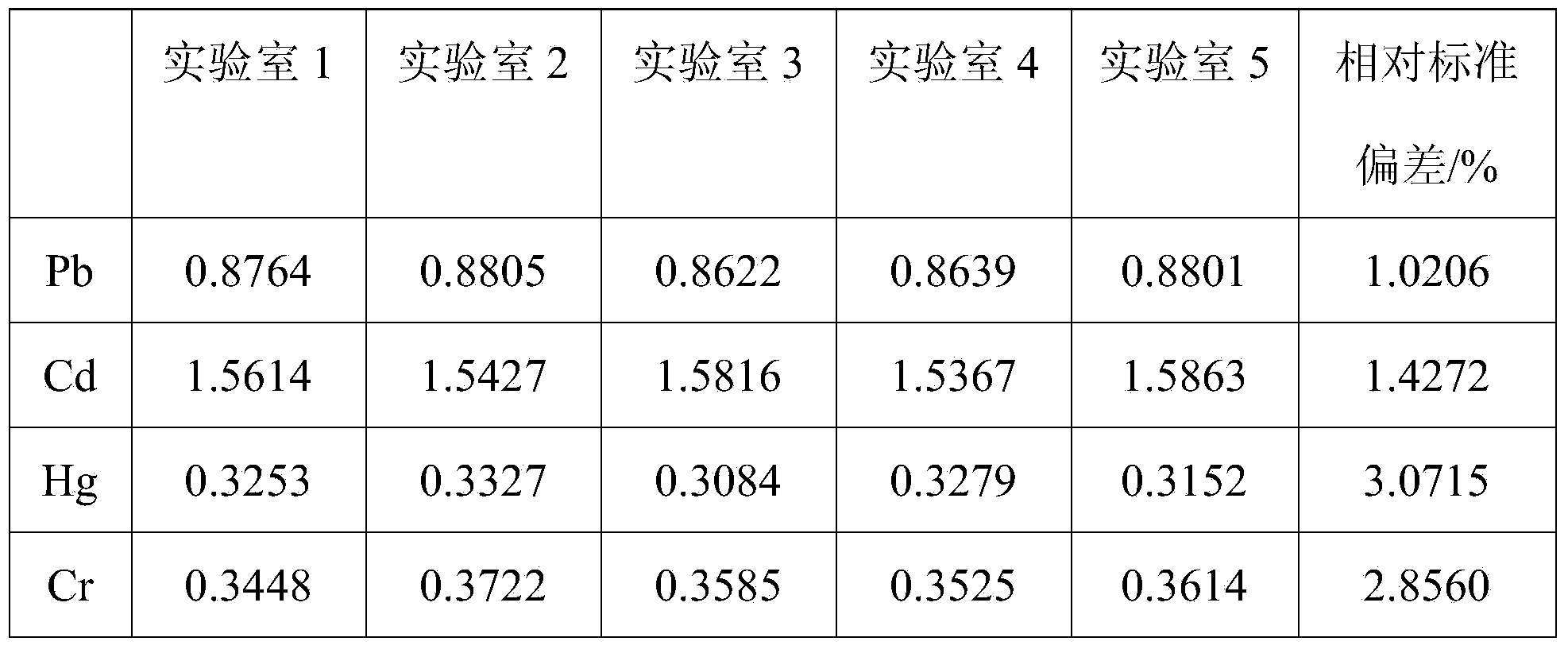Detecting method for contents of cadmium, lead, mercury and chromium in plastic
A detection method and technology of chromium content, applied in the detection of lead, mercury, chromium content, and cadmium in plastics, can solve the problems of toxicity, protein denaturation, etc., achieve good repeatability and reproducibility, high accuracy, and simple detection method Effect
- Summary
- Abstract
- Description
- Claims
- Application Information
AI Technical Summary
Problems solved by technology
Method used
Image
Examples
Embodiment 1
[0036] (a) Use an electronic balance to weigh 0.2±0.001g of the plastic sample, cut it into particles no larger than 0.2g, and put it into a 100ml beaker;
[0037] (b) Add 5 ml of sulfuric acid (H 2 SO 4 ), covered with a glass watch glass, placed on a heating plate with a temperature above 280°C, and heated for 20-30 minutes to decompose and carbonize the organic components; slowly add 5ml of nitric acid to the beaker to digest and oxidize the sample (repeat this step until sample is completely digested), Note meaning: Risk of splashing due to violent reaction;
[0038] (c) Remove the beaker from the heating plate, let it stand for cooling, then slowly add 10ml of perhydrochloric acid and 10ml of EDTA-2Na solution, heat the beaker on the heating plate, continue to heat until boiling, keep for 3 minutes, remove the beaker from the heating plate , leave to cool for 10 minutes (to room temperature);
[0039] (d) Rinse the beaker and glass watch glass used for pretreatment ...
PUM
 Login to View More
Login to View More Abstract
Description
Claims
Application Information
 Login to View More
Login to View More - R&D
- Intellectual Property
- Life Sciences
- Materials
- Tech Scout
- Unparalleled Data Quality
- Higher Quality Content
- 60% Fewer Hallucinations
Browse by: Latest US Patents, China's latest patents, Technical Efficacy Thesaurus, Application Domain, Technology Topic, Popular Technical Reports.
© 2025 PatSnap. All rights reserved.Legal|Privacy policy|Modern Slavery Act Transparency Statement|Sitemap|About US| Contact US: help@patsnap.com

